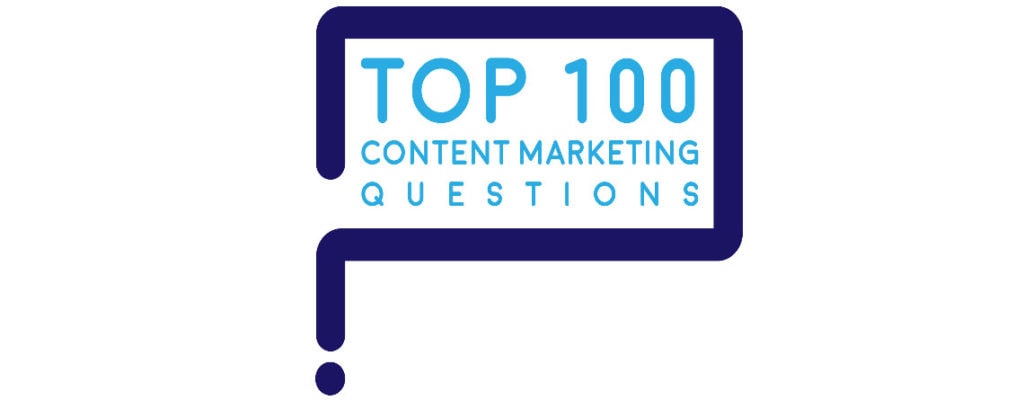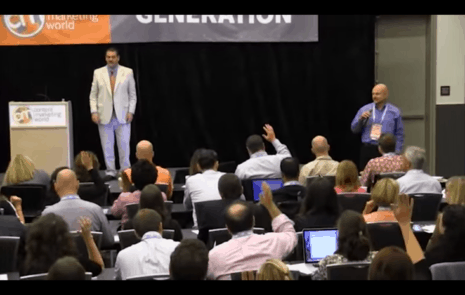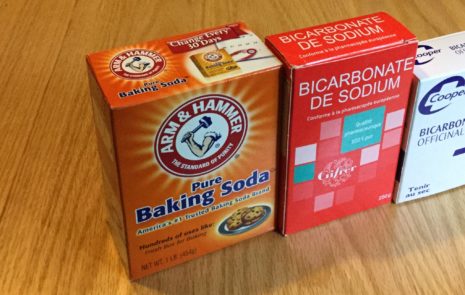
Top 100 Content Marketing Question: How to better align content to the buyer journey?

A smart marketer asked: “How can we better align content to the buyer journey, making it a personalized experience?”
To align content to the buyer journey, learn what buyers really need.
Buyer persona research lets you see through the eyes of buyers, so you can align content to the buyer journey.
Personas yield abundant, specific insights you can’t get from demographics, firmographics, or segmentation alone. With buyer persona research, you:
- Learn the exact language buyers speak, so you can make your content crystal clear.
- Discover precisely where buyers go to find information, so you can place your content in the right media.
- Find out which specific pain points trigger buyers to seek a new solution, so you can create content to address those pain points.
- Identify the obstacles buyers encounter during the buyer’s journey: where buyers get stuck, which information they need, and what objections they must overcome to move forward with a purchase.
- Gain insights into the inner workings of a buying team – who has input, who objects and how to overcome their objections, who recommends, and who decides.
These insights enable you to draw a map of your buyers’ journeys. Here are 4 models of the customer journey to choose from.

Here’s a blog on how to perform your own buyer persona research.
Teach first, then sell.
What do your buyers need to know to move forward in their journey?
To align content to the buyer journey, find out which questions buyers are asking as they go along. Then, create content to provide the best answers on the Internet to your buyers’ questions.
Here are 14 ways to gather buyer questions. After you gather at least 1,000 questions, perform a text analysis to show:
- What are your buyers’ most important questions?
- How do buyers’ questions vary at each stage in the journey?
- What differences show up among buyer segments?

For example, in my content marketing workshops, I gathered more than 1,200 questions from marketers. This infographic shows what their questions revealed:
Here are answers to marketers’ Top 100 Questions.
What did a text analysis of marketers’ questions reveal? In short:
- Marketers ask different questions at each step in the content marketing journey.
- The most important question is: How to measure content success?
- Questions reveal that pain points vary by segment.
The pain points of content marketing differ for B2B and B2C marketers.
For consumer (B2C) marketers, the biggest pain point is attribution: How to demonstrate the success of content marketing, in light of all the other marketing activities going on?
For business-to-business (B2B) marketers, the biggest pain point is: How to fit content marketing into the marketing department, the organization, and the company’s culture?
Based on knowing the steps in your buyers’ journey, and knowing their pain points by segment, you’re ready to:
- Answer key questions at each step in the buyer journey.
- Bundle related content together.
- Provide each segment with the answers it needs.
- Organize content sequentially: from problem to solution to purchase to use.
Now, you have everything you need to become a good teacher with content marketing.
In fact, you can even get buyers to binge on your content. Here’s how with tips from Ardath Albee.
The steps above make you into a good content marketing teacher, building a relationship with customers by educating them and making them smart buyers.
A teacher talks to the whole class at the same time, sharing the same information with everyone, as you’re now doing with content.
Elevate your content from teacher to tutor.

To align content to the buyer journey, go beyond the role of teacher. Become a tutor who customizes content to each buyer’s specific needs, teaching buyers what they need to know one by one.
Apply marketing automation to personalize your content:
- Personalize content with names, relevant topics, known preferences and experiences, previous purchases, and more.
- Apply pattern recognition to find which links a buyer clicks, what time of the day and week they’re active, and which sources and media they choose.
- Ferret out the interests that define a buyer’s membership in a tribe, by mining their social media profiles.
The best tutorial content I’ve experienced as a buyer comes from Sweetwater, a website for musicians.
Ask its search engine a question, and you get a pop-up that invites you to talk by text or call, like this one:

Your questions are answered one by one, by a real live human being who’s a fellow musician – a member of your tribe.
What’s more, when you purchase from Sweetwater, you’re assigned a specific person who talks to you by phone, emails you, answers your questions, and offers suggestions. One person takes responsibility for your relationship with Sweetwater.
As a result, I don’t think of Sweetwater as a brand, I think of Sweetwater as a person – Cody.
Cody takes care of my guitar and ukulele needs. He helps me make decisions about my next purchase (my first banjo). He:
- Advises me on which instrument fits my needs best.
- Answers my questions.
- Suggests accessories I might need.
- Calls when the instrument ships.
- Calls after the instrument’s received, to make sure everything’s ok.
To me, that’s true personalization: When your brand becomes a person, someone your buyer knows by name.

“How can we better align content to the buyer journey making it a personalized experience?” is one of marketers’ Top 100 Questions about content marketing.
Here are answers to marketers’ Top 100 Questions.





